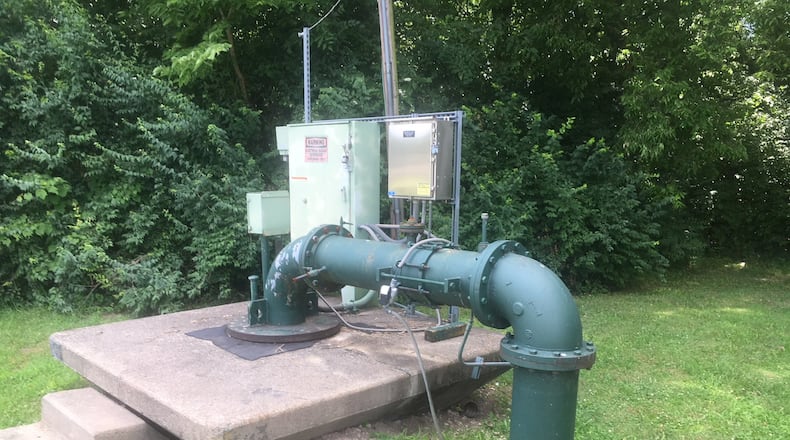Some of those chemicals include per- and polyfluoroalkyl substances or PFAS.
The chemicals are in firefighter foam, which the base previously used to fight fires and conduct training exercises since the 1970s. Dayton firefighters also used it to fight fires and train. Both Wright-Patt and Dayton training centers are located above the aquifer.
“In my discussions with Mayor (Nan) Whaley of Dayton,” Dewine wrote in his letter to Secretary of Defense Mark Esper, “she has expressed great concern over the potential impact to millions of Ohioans that depend on water from the Great Miami Buried Valley Aquifer as a source of safe drinking water if we do not work together with a greater sense of urgency and more definitive action to address PFAS contamination,”
The December 2019 revisions to the National Defense Authorization Act allows governors to ask the secretary of defense to direct Department of Defense installations to enter into cooperative agreements to address PFAS issues.
The Ohio EPA supports the governor’s letter to the Department of Defense, and they look forward to discussing a cooperative agreement with both the DOD and Dayton, said Heidi Griesmer, the Ohio EPA’s deputy director for communication.
City of Dayton officials did not respond in time to a request for comments.
PFAS include various types of substances known as PFOA, PFOS and GenX. It can be found in firefighting foam, water-repellent fabrics, nonstick products, waxes, polishes and some food packaging, according to the U.S. EPA.
Studies suggest that exposure to the chemical might affect pregnancy, increase cholesterol levels and cause some forms of cancer, according to the Centers for Disease Control and Prevention.
PFAS is perhaps the biggest threat to the region’s drinking water system, Mike Ekberg, water resource and monitoring manager at the Miami Conservancy District, told the Dayton Daily News in February.
The Buried Valley Aquifer has about 1.5 trillion gallons of water, making the Dayton region “water rich.” It stretches underground between Logan and Hamilton counties, providing most communities in the region with drinking water. An abundance of clean and affordable water is also a significant economic asset for the Dayton region, for both new and existing companies, officials have said.
Starting in 2016, the city of Dayton has shut down some drinking water wells after PFAS was detected at levels much lower than the current federal guidelines. It also has sued the chemical manufacturers. City leaders have said numerous times that they’re working on a plan to contain the contaminated water. However, they’ve declined to discuss the plan and other PFAS-related issues because of the pending lawsuit against the PFAS manufacturers.
A cooperative agreement, according to DeWine, would ensure better coordination with respect to the following:
- The exchange of PFAS-related information and data.
- Oversight over drinking water source and finished drinking water assessments.
- Implementing potential treatment or other measures to address PFAS contaminated drinking water near or above the current U.S. EPA Health Advisory Levels, or other future regulatory limits for PFAS contaminants in drinking water.
- Communications with potentially affected residents and businesses located in Dayton, surrounding areas and in the vicinity of Wright-Patt.
About the Path Forward
Our team of investigative reporters digs into what you identified as pressing issues facing our community. The Path Forward project seeks solutions to these problems by investigating the safety and sustainability of our drinking water. Follow our work at DaytonDailyNews.com/Path-Forward.
About the Author
